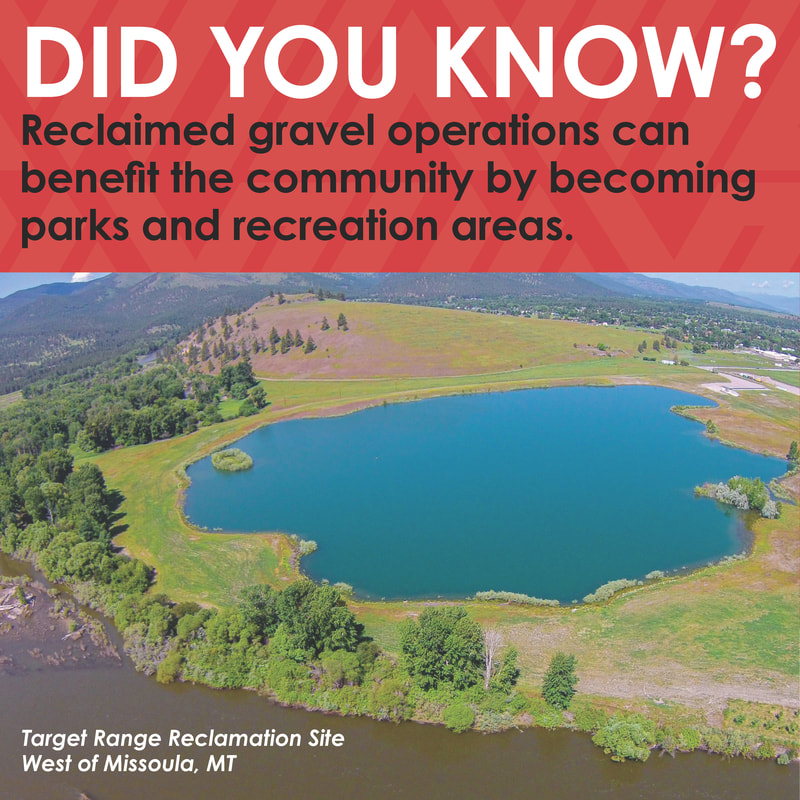This committee focuses on issues pertaining to open-cut mines, involvement with local planning/zoning issues, environmental/permitting concerns, legislation, litigation and public relations. This committee meets on an as-needed basis.
Division Chairman: Ken Murphy, TMC, Inc.
Opencut Act is a Reclamation Act
Gravel for construction is only found in certain areas. As demand is created through growth of communities, construction companies look to access the land. In this process, they apply to the Department of Environmental Quality under the Opencut Act. This is a reclamation act, which in many situations puts that land back in a way that significantly benefits the neighboring property. Public parks and lakes are the majority of uses, but commercial enterprises also develop.
Learn more about gravel, opencut, and recent legislation here:
Opencut Act is a Reclamation Act
Local Access to Gravel Reduces Costs, Emissions
Gravel is sourced as close to the user as possible, which lessens the environmental impact of transportation. When local access to gravel is cut-off, the impact significantly increases costs associated with the delivery of gravel (fuel costs, increased driver/truck numbers, etc.). In addition, the impact to environment and current infrastructure is negatively impacted, as increased truck traffic takes a toll on roadways and greenhouse gasses.
No one cares about the environment, water quality, air quality, dust, and being a good neighbor more than the Montana Contractors Association and its members.
Listen to David Smith, MCA Executive Director, explain the facts about locally sourced gravel:
Facts Over Fear
Many perceptions surround the issue of gravel and opencut mining. Most are myths, fueled by fears that get spread by those who do not understand the process and the importance of gravel in construction and the development of our communities in Montana.
Among those misconceptions is pollution – the emissions that are generated from opencut operations. According to research done by Steve Zemba, PhD, PE, benzene emissions from a typical asphalt pavement mixtures (APM) plant are the same as those from 19 residential woodstoves or 1 gasoline filling station, and volatile organic compound (VOC) emissions from a bakery are about 12 times larger than those from a typical APM plant:
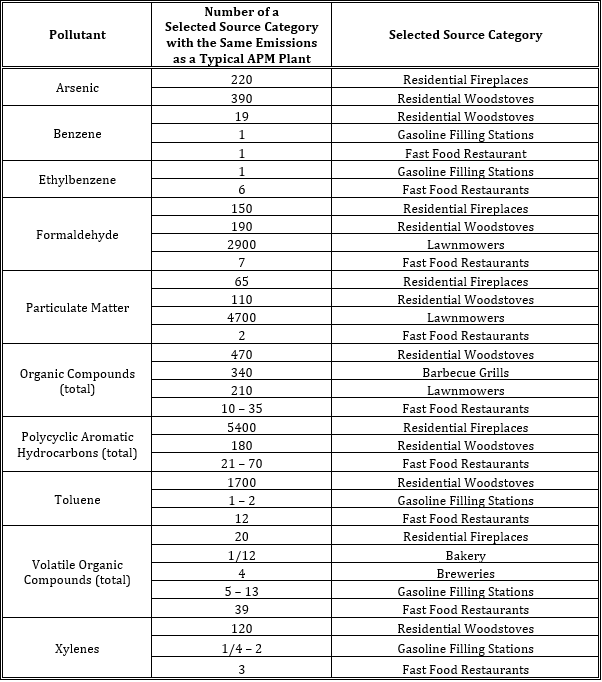
Why Gravel?
Believe it or not, sand and gravel play a vital role in our everyday lives. Besides being an instrumental element in construction, gravel is used in agriculture to create healthier soil, along streams and rivers to help prevent erosion, and in landscapes to construct environmental-friendly yards, patios, and gardens.
In construction, we utilize sand and gravel in many projects, from roads & bridges to commercial buildings to home foundations.
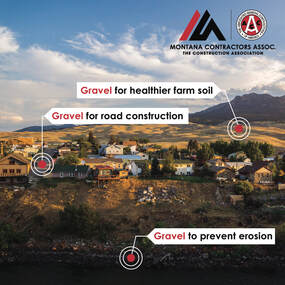
Gravel Builds Communities
Sand and gravel are instrumental in building the necessary infrastructure that allows communities to thrive. Some such examples of where gravel grows communities include:
- Roads & Bridges: the streets and highways we use daily to get to work, transport children to school, allow emergency vehicles to tend to the injured, and transport goods to retail locations
- Schools: gravel is used in the construction of schools (elementary, middle school, high school, colleges & universities) from the building itself, to parking/bus drop-off areas, and even playgrounds
- Airports: thousands of planes take off and land daily because of runways and airport buildings constructed from gravel material
- Water/wastewater facilities: where we treat our drinking water and dispose of our wastewater is all done in buildings constructed from gravel and using gravel as a processing agent
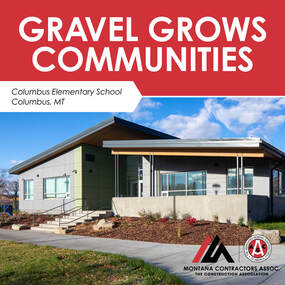
Providing Future Family Recreation Sites
Each gravel processing site has a pre-determined lifespan. As part of the permitting process, plans are made to transform these sites into recreation areas for families across Montana. Among some of the notable sites across the state include:
- Frenchtown Ponds State Park, Frenchtown
- Target Range Ponds, Missoula
- Spring Meadow State Park, Helena
- Glen Lake Rotary Park, Bozeman
- Knife River Ponds, Missoula
